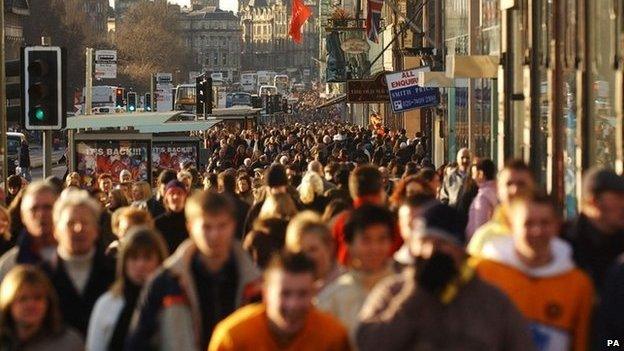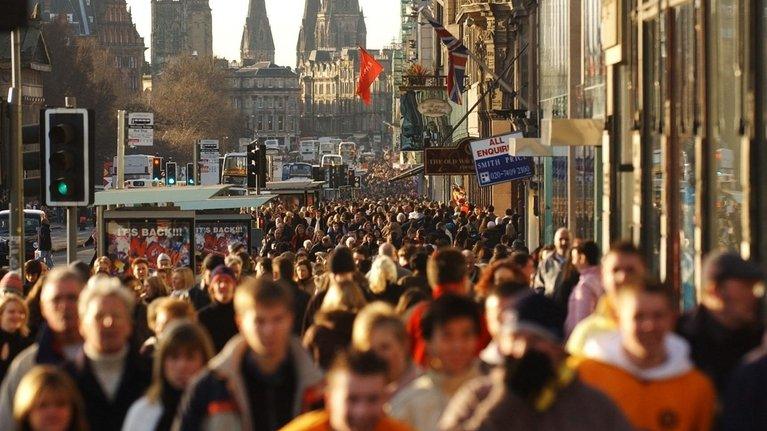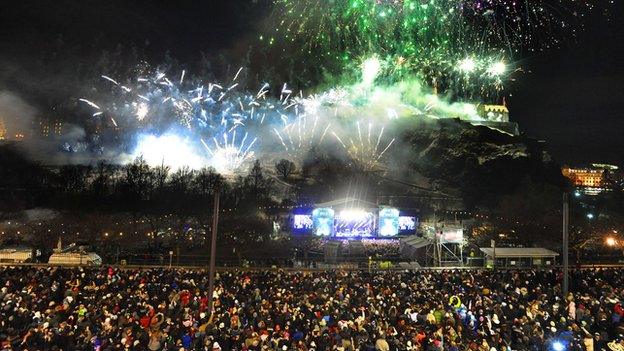Scotland's population projected to increase by 9%
- Published

The population projections covered a 25-year period from 2012 to 2037
The population of Scotland is predicted to increase by 9% over 25 years, according to official figures.
The National Records of Scotland projections suggested a rise from 5.31m in 2012 to 5.78m by 2037, followed by continued growth after that date.
However, the pattern of growth was not predicted to be even across all areas of the country.
An increase was predicted in 20 out of 32 local authority areas, with the population of the other 12 set to fall.
The areas with the greatest projected increase in population were Aberdeen City and City of Edinburgh, with a 28% predicted rise each, followed by Perth & Kinross with 24%.
Inverclyde had the largest projected decrease at 19%, followed by Argyll and Bute at 13%.
The national statistics publication, external made population projections for the 25 year period from 2012 to 2037.
"The assumptions are based on past trends and do not take account of any future changes that may occur as a result of policy initiatives, but may reflect the past impact of policy and economic changes," the document stated.
The authors also cautioned that the projection makes "certain assumptions about future fertility, mortality and migration" to reach figures based on patterns of births and deaths and net migration.
The research pointed to an ageing population, with the number of people of pensionable age set to rise in all local authority areas. The highest projected increases were 47% for West Lothian and 44% for the Shetland Islands.
However, the working age population was predicted to increase in only 13 local authority areas and to decrease in 19.
The document followed census data in April which showed Scotland's population reached an all-time high of 5.32m in mid-2013.
- Published30 April 2014

- Published17 December 2012

- Published17 December 2012
